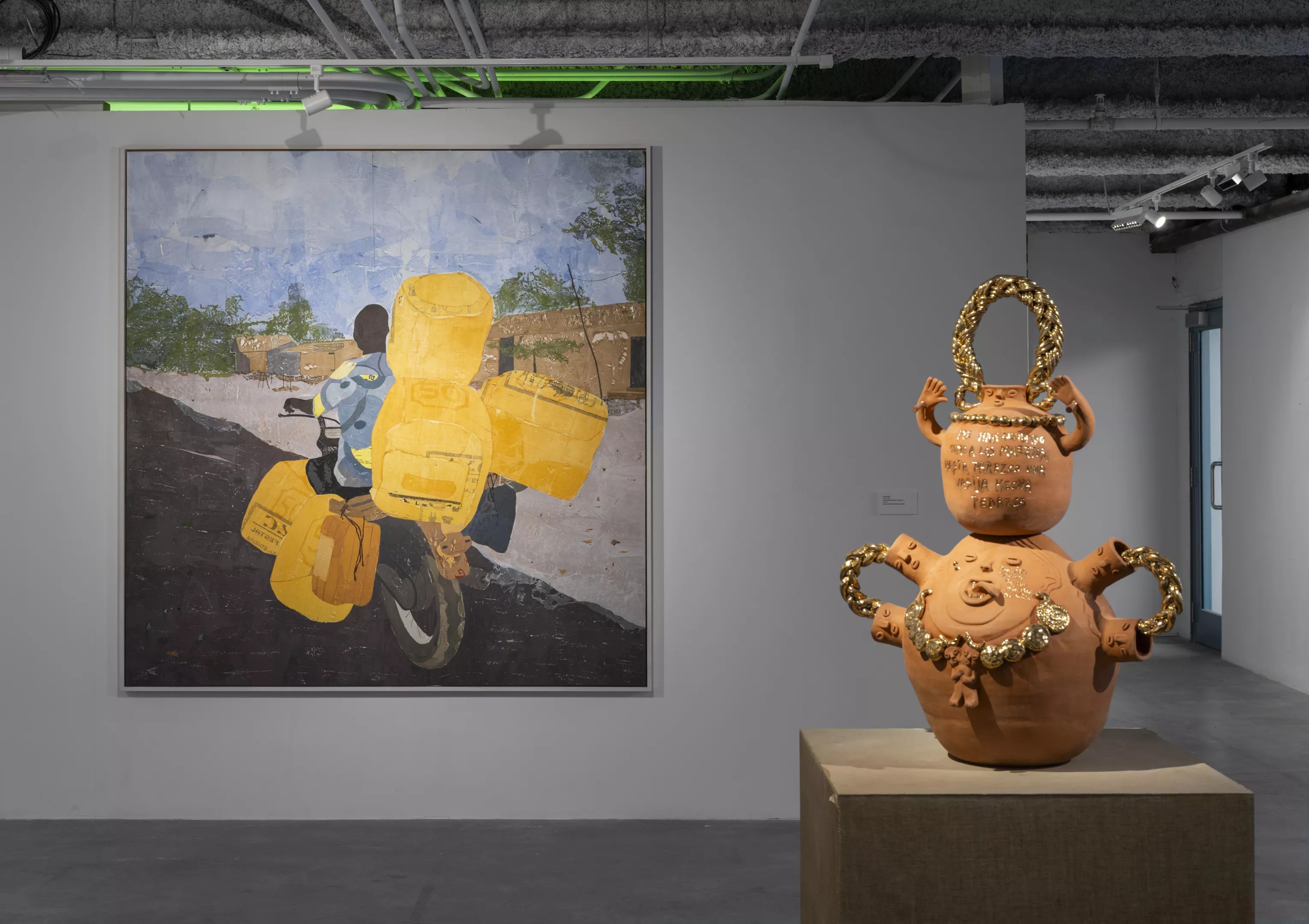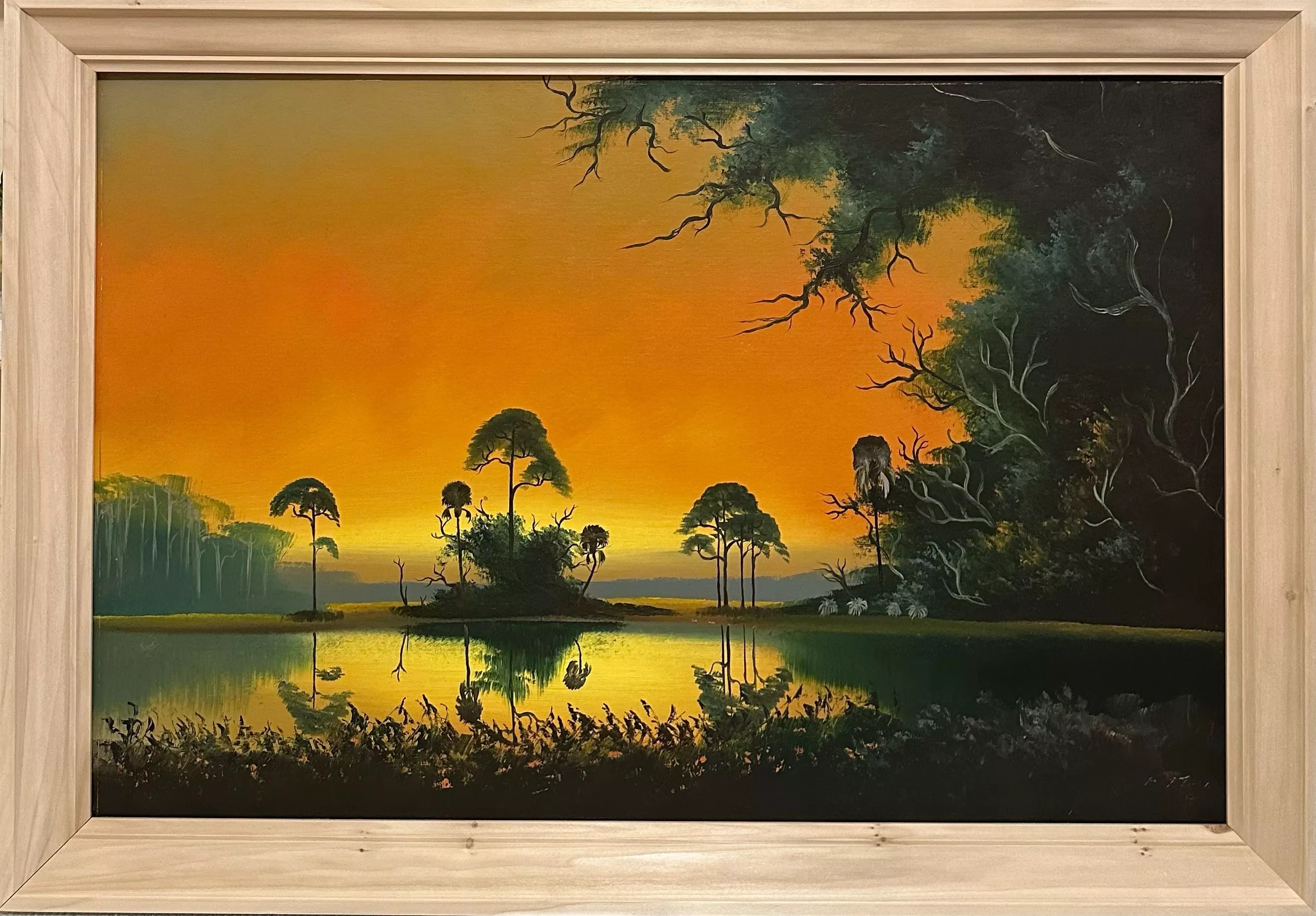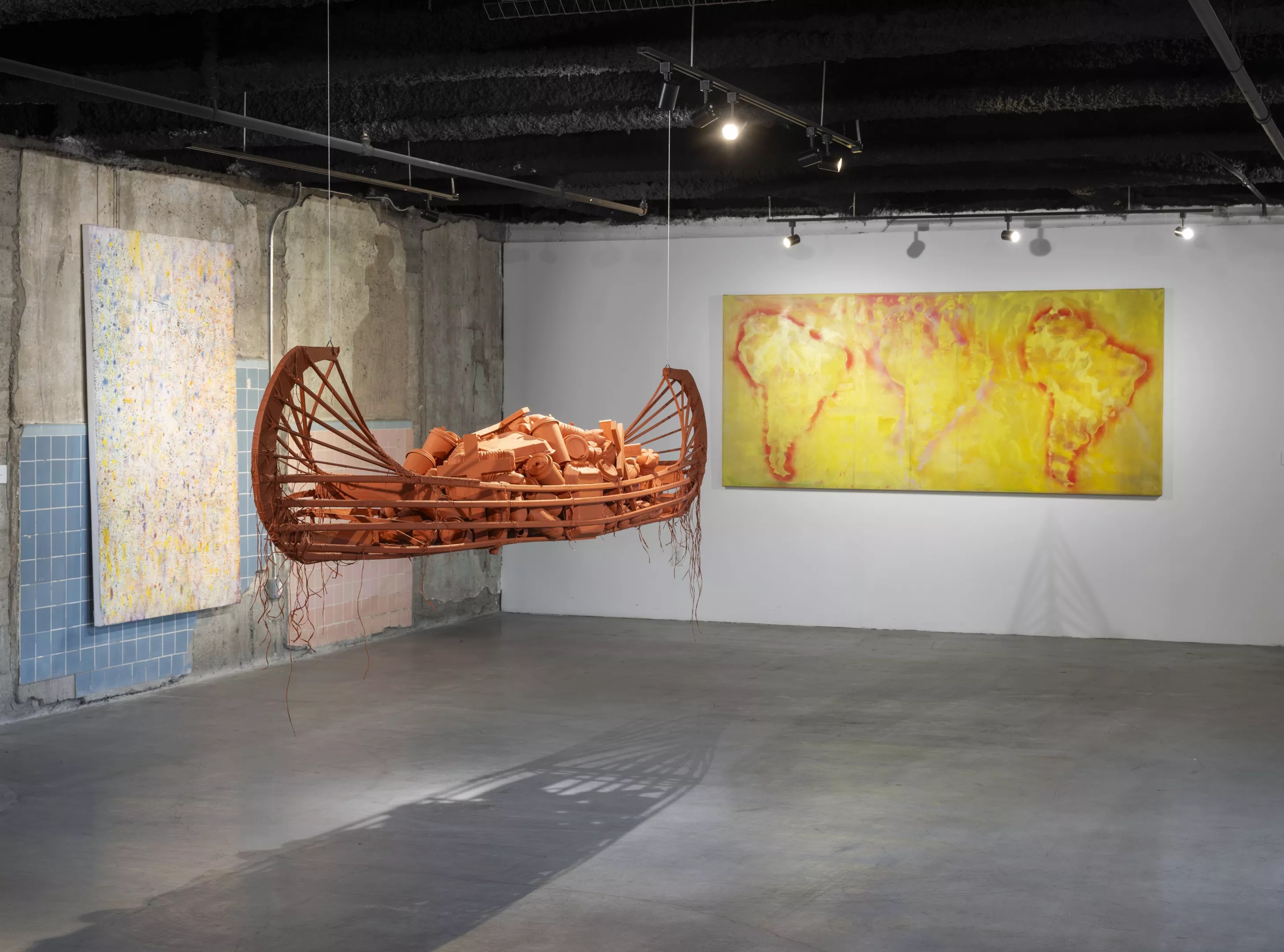
Historic Hampton House photo by Oriol Tarridas

Audio By Carbonatix
It’s appropriate that an art exhibition at a former motel in the heart of one of Miami’s historically Black communities should conclude with a group of artists who might have stayed there. “Invisible Luggage,” an impressive show at the Historic Hampton House, features outstanding work from a variety of artists, all assembled to illustrate the intangible things we carry with us through life.
But the final room, featuring a group of landscapes Highwaymen – a loose collective of Black Floridian painters who traveled up and down the state selling their work out of the trunks of their cars in the ’50s and ’60s – feels the most poignant considering the museum’s history. The Hampton House was a Green Book-listed motel that provided refuge to Black travelers during the Jim Crow era. Luxurious in its heyday, it became a destination for Black celebrities, entertainers, and political leaders, all of whom were barred from lodging in Miami Beach’s then-segregated hotels. It was the site of the historic meeting between Malcolm X, Muhammad Ali, Jim Brown, and Sam Cooke depicted in the film One Night in Miami. The rooms where Ali and Martin Luther King, Jr. stayed were preserved when the building was restored into a museum and community center in 2015.
“We tried to cast as broad of a net as possible, and we were able to come up with a really solid artist list,” says Auttrianna Ward, a co-curator of the show. She and the rest of the team behind the show had to contend with the idea of invisibility, and what it means in the context of a site like the Hampton House.
“When I hear ‘invisible’ I always think about Invisible Man, not just [the novel by Ralph Ellison], but also an essay by Hilton Als, based on a conversation with Toni Morrison, where she was saying, ‘The question for me was, ‘invisible to whom?” And I think that’s really important as we think about, in the art world, always performing for the gaze of others,” she says. “How are we invisibilized? And where are we visible? Those are things we’re thinking about.”
Will you step up to support New Times this year?
At New Times, we’re small and scrappy — and we make the most of every dollar from our supporters. Right now, we’re $17,800 away from reaching our December 31 goal of $30,000. If you’ve ever learned something new, stayed informed, or felt more connected because of New Times, now’s the time to give back.

Mary Ann Carroll, Golden Reflections, ca. 1970s. Oil on Upson Board, 24 x 36 in.
Mark Lerner and John Biederwolf Collection photo
As an art space, the Hampton House hasn’t been on the radar in Miami’s art scene for very long. The space made a sort of debut in 2023 with “Gimme Shelter,” a star-studded exhibition featuring Miami-based artists such as Reginald O’Neal and Jared McGriff alongside Rashid Johnson, Charles Gaines, Howardena Pindell, and Parliament-Funkadelic bandleader George Clinton, all luminaries of Black art. Much of the art on display came from the collection of Beth Rudin DeWoody, a curator and philanthropist who founded the Bunker Artspace in West Palm Beach and led the show’s curation. Local galleries including Spinello Projects, Mindy Solomon, and Jupiter Contemporary also contributed their own sections to the show.
For “Invisible Luggage,” the big names are still present. The show begins and ends with two major color field painters of Black descent, with an Ed Clark push-broom painting greeting guests as they disembark the elevator, and a work by Sam Gilliam hanging in the final room with the Highwaymen paintings. Local artists including Tomm El-Saieh and Joel Gaitan also make appearances. The siloed approach to exhibiting the art has been ditched in favor of a more conceptual path attuned to the show’s overall theme. Rudin DeWoody returns as principal curator, along with a team that includes Ward, Laura Dvorkin, Maynard Monrow, and Zoe Lukov, and they’ve settled on a more definite story and progression.
The earlier rooms in the show remark on the reasons why people pick up and leave their homes. Pieces caught between packing and unpacking occur: An installation by Barbara T. Smith titled “Trunk Piece” features the titular chest and its contents, a collection of bottles, baubles, and other keepsakes, laid out on carpets, while a fabric sculpture by Cecilia Vicuña takes the form of a long piece of unspun wool being rolled up, or perhaps unrolled. A piece by Vanessa German called “Notes on the Absence of Sacredness: How Little Black Girls Die” takes the form of a white statue with Black facial features and hair cradling a black doll. Diamond tears stream from the white figure’s eyes and Virgin Mary statues protrude from her cloudlike Afro. It’s a complicated, layered work, but its inclusion here speaks to the racialized suffering that has motivated countless journeys of migration for Black people.

Artwork (from left) by Tomm El-Saieh, Jaune Quick-To-See Smith, and Frank Bowling in “Invisible Luggage” at the Historic Hampton House.
Historic Hampton House photo by Oriol Tarridas
The show’s back half speaks more to the act of travel instead of its motivations. A Frank Bowling painting of South America stares out at an installation hanging in the center by Jaune Quick-to-See Smith: “Trade Canoe: Making Medicine” sees the Native American (Confederated Salish and Kootenai Tribes) artist fill the titular boat with the detritus of American capitalism, from styrofoam coffee cups and plastic bottles to wooden crosses, all objects imposed upon Indigenous life by colonialism.
It may seem strange for so many artists of such disparate origins and ethnic backgrounds to be placed in a context so deeply associated with a specific time and place, a museum dedicated to the Civil Rights Movement and a cornerstone of Miami’s Black community. But Ward questions the idea that any museum or curator should be limited by such connections.
“In the art world, I’ve seen the ways that we limit folks to different boxes,” she says. “Even my identity is frequently questioned because I work so much with Latin American artists. It’s like, Okay, I’m a Black curator, so am I only supposed to work with Black artists or brown artists? And even this year, working with Asian artists and the like, as a Black curator, I have to explain my context for working with non-Black artists, but white curators don’t.”
Ward says working on the Hampton House exhibition and collaborating with the rest of the curatorial team allowed her to examine these kinds of issues critically. “I also think it’s important for there to be shows where White, Black, Asian, and Indigenous artists are placed together and in context, and to think about the different human conversations we can have with each other through our work. I just think it’s important, especially in this time that we’re in.”
“Invisible Luggage.” Through Saturday, February 15 at Historic Hampton House, 4240 Northwest 27th Ave., Miami; 305-638-5800; historichamptonhouse.org. Admission costs $25 and includes a tour.